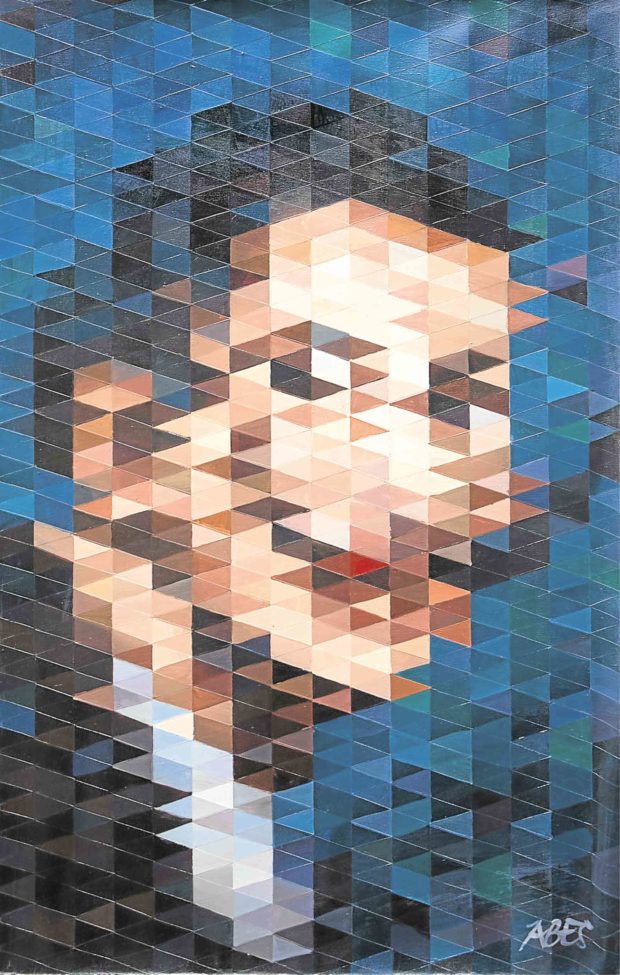
In “Disassembled Assembly,” Aldrino Albes recreates the opacity of images when viewed from a cloudy covering, so that they seem to break apart or leave spaces between them, the visual disconnect obviously representing the constructivism of art.
Still in his other paintings, Albes shows images that intersect or overlap over a geometric grid, so that once whole and coherent, they “disassemble” and deconstruct. Once a singular design, an image now becomes a plurality, and the integrity of art becomes a multiplicity, even a conflict and division.
Moreover, the work’s sense of construction results in art being conscious of its own construction, art becoming self-conscious, art becoming conscious of its own artifice.
This sense of artifice is applied by Albes in classical art. “By reimagining traditional painting constructs, he challenges notions of linear perspective, space, dimensionality and abstraction,” says art writer Grace Ng.
Ng compares Albes to National Artist Ang Kiukok, whose works are “characterized by the reduction of natural appearances to their bare essentials or geometrical equivalents, and by the emphasis on formal structure without regard for illusionary depth. “
It may be however that the viewer may get lost in the illusion despite Abes’ metavisual technique. After all, Albes, especially in “Disassembled Assembly,” combines colors and optics to create retinal images that work on multiple levels. His art, while being self-conscious, is also the art of the illusory.—CONTRIBUTED
“Disassembled Assembly” is on view at Galerie Joaquin on 2/F, Phase 2, UP Town Center, Quezon City; tel. 2471109, email [email protected]














































